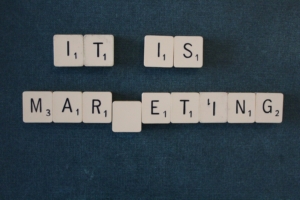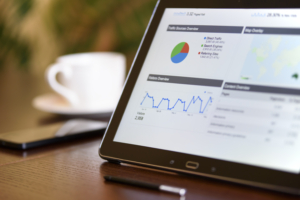Since the presence of the internet, marketing strategies changed drastically. But is digital marketing really the new traditional? First, I will give you a short overview to understand what traditional and digital marketing is.
Traditional marketing
Businesses have used traditional marketing for the last 50 to 100 years. To reach their consumers there are different types of media used:
- print media: magazines, newsletter, brochures, post cards, flyers, outdoor banners
- broadcast media: TV, radio
Digital marketing
People spend twice as much time online as they used to 12 years ago. That means digital marketing is getting more and more important. Here is a quick overview of the most common assets and tactics:
Assets:
- websites and blogs
- white-papers and ebooks
- interactive tools
- infographics
- social media channels (Facebook, Instagram, LinkedIn, Twitter, etc.)
- online brochures and lookbooks
- branding assets (logos, fonts, etc.)
- earned online coverage (social media, PR and reviews)
Tactics:
- Search Engine Optimization (SEO)
- Content Marketing
- Inbound Marketing
- Social Media Marketing
- Pay-Per-Click (PPC)
- Affiliate Marketing
- Email Marketing
- Online PR
Fields of difference
Audience
Traditional marketing is more effective to target potential customers who are not connected to the internet on daily basis. The advantage is, it easily reaches a target local audience. For example, when you play your ad on a radio station in one location, you will will reach a targeted city or region. Or when you send out print media to households in a specific suburb. This is the reason why the traditional marketing strategy suits best for low-end economic citizens and senior citizens. On the other way, digital marketing reaches millions of people in tons of different ways. Because most people, especially teenagers, young adults and businessmen, are spending more and more time online, digital marketing is an amazing opportunity for businesses.
Immediacy and tracking
Traditional marketing takes a long time to transform from a thought into a finished product. After you sent out your ads, it takes a longer time to see the reaction. In addition, it is hard to keep track how many people you have reached and who showed interest in your advertisement. On the other hand, digital marketing reaches customers within seconds. Furthermore it makes it possible to see the number of visitors of your site, clicks on your ad, subscribers increase and much more at the touch of a button.
Coverage
In traditional marketing, your advertisement will be aired on radio or television or printed on paper media. Although you put a lot of effort in designing and creating your content, it is very short-lived. For instance, flyers and newspapers, where your advertisement was printed on, will most likely be thrown away the next day. On the other side, the coverage of your online advertisement will be visible forever. Customers will always have the possibility to search for your advertisement when they would like to see it again.
Cost
Both marketing strategy interacts with the budget, since money is basically the most important working element for businesses. Traditional marketing is having a big disadvantage when talking about the costs. It is very expensive to produce print media and keep the promotion running. The same happens with broadcast media on television and radio – you have to air the ad multiple times. Online marketing will also create costs for the company, but much less than traditional marketing. In addition there are multiple virtual marketing strategies that are free.
Tracking
It is difficult to keep track of your traditional marketing strategy. You need to put a lot of effort and time-consuming research to get information how your customer behaves amongst your products. On the other hand, online marketing is easy to track. Email marketing software can count the number of people who view your message. Moreover, it can tell the number of advertisements that lead to purchases on online sales.
Tracking ROI
ROI, or return on investment, is known as the profit gained and the money saved because of an investment. Further you can say, ROI proofs that the investment you made is or will be worth in the end. The method of calculating the ROI of each strategy differs somewhat.
As I already mentioned above, when using traditional marketing it is not easy to find out how many people saw the advertisement. It is because your audience is very wide, and you don’t really know who really sees or looks at your ad. A way to try to calculate the ROI is to measure the increase in sales before and after marketing. What changes have you seen in your numbers after launching your ad?
Tracking the ROI when using digital marketing strategies can be easier and harder. It becomes easier when you use certain online tools. One online tool is called SEO, or search engine optimization. This tool helps you to increase your visibility on the Internet, mainly on search engine results pages. But the method of measuring differs depending on which digital marketing strategy you are using.
Since social media marketing is one of the most common, I will explain what is important if you want to track the ROI. There are 5 steps which are essential when calculating.
-
Define your goal – which actions or goals would you like to track?
- New followers
- Signups for newsletter
- Online purchases
- Filled out contact form
- Downloads of .PDF file
- Time spent on website
- Clicks on link
-
Track your goals
- Engagement
- This shows the number of comments, mentions, likes, favorites, retweets and other interaction with your brand.
- Traffic
- How many views you gained through your social media for a certain web site
- Reach
- The number of users that have seen a certain publication. It is an important number to measure your brand’s growth.
- Rebound Rate
- Indicates the percentage of views from social platform which just end up leaving your page a few moments after entering it and not seeing anything else.
- Conversion rate
- Essential for knowing how many conversions you’ve gotten thanks to social platforms, whether it be views from leads or clients.
- Engagement
-
Which tools are you going to use
- There are multiple tools – some are Twitter Analytics, Google Analytics, Facebook Insights
-
Determine total cost
- It is important to keep track of all costs you’ve already made in your campaign. These can be value of work hours, various costs of each social media channel, hourly rate if some of your accounts are being administrated by a Community Manager and other costs that have been made for this investment.
-
Calculate ROI
- The Social Media ROI of an action is calculated by dividing the net income by the cost of this action and multiplying it by 100.
- ROI =( (Profit-Investment) / Investment) x 100
Final words
Digital marketing is a huge field and there are many opportunities how to grow your business. Some are more complex than other, but nothing that is impossible to learn. Great things don’t happen over night – so just keep learning and you will make your way.



